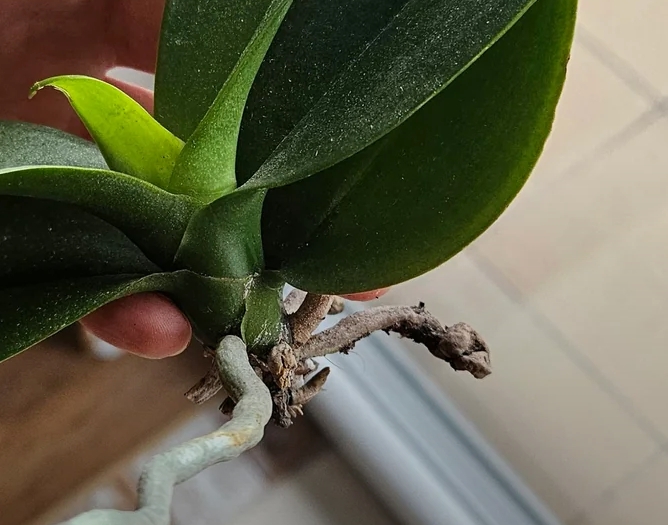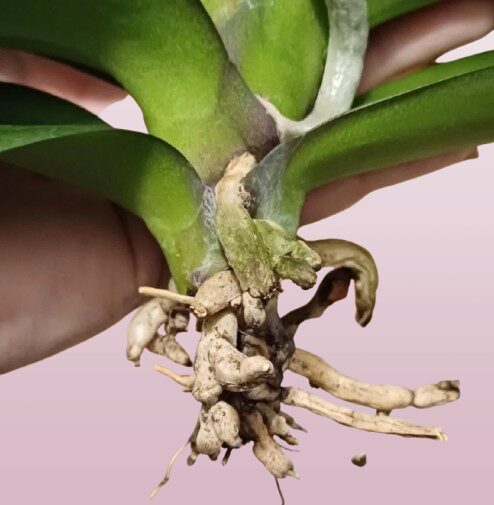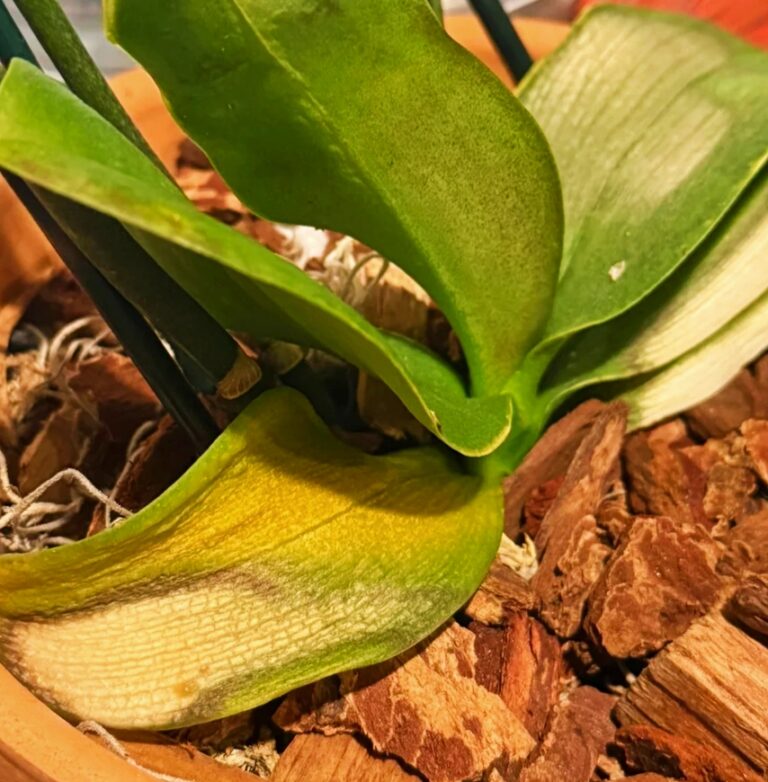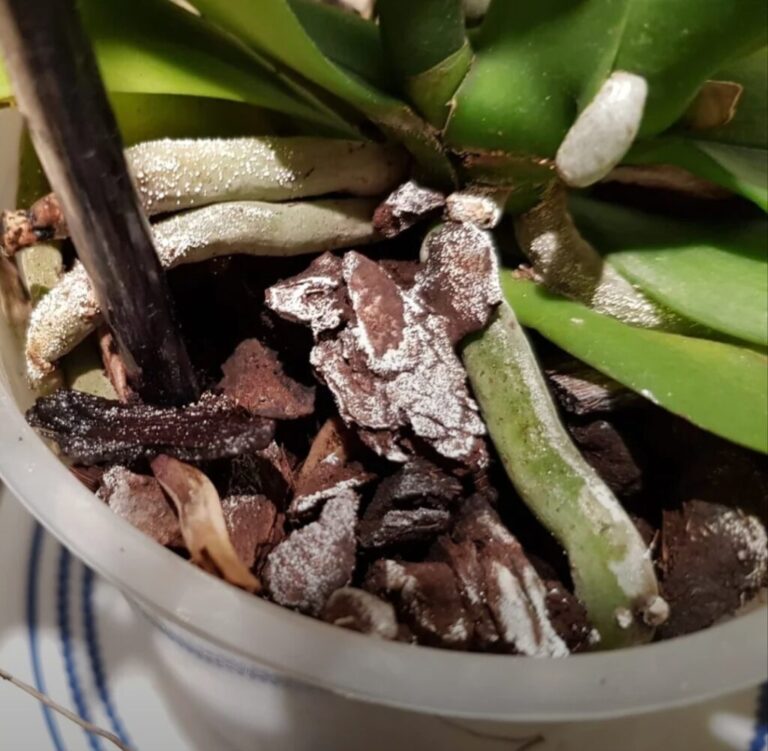Orchids are stunning, resilient plants, but when they lose their roots, it can feel like a crisis. Whether caused by overwatering, pest issues, or simply old age, an orchid without roots presents a real challenge for any gardener. The orchid’s roots are its primary way of absorbing water and nutrients, so without them, it can struggle to survive. However, don’t lose hope! With the right care and attention, it’s entirely possible to save your orchid and help it thrive once more. By following these 7 powerful strategies, you can give your orchid the best chance of survival, even without its roots.
- 1 Orchids Without Roots
- 2 1. Provide the Right Environment
- 3 2. Use a Supporting Medium
- 4 3. Watering Techniques
- 5 4. Fertilization Tips
- 6 5. Consider Rooting Hormones
- 7 6. Prune the Orchid Properly
- 8 7. Patience and Observation
- 9 Orchids Without Roots: My Personal Experience
- 10 Understanding the Problem
- 11 My Go-To Solution: Orchids Focus Grow
- 12 Understanding the Problem
- 13 Here’s how I used it:
- 14 Knowledge Acquired:
- 15 FAQs on Orchids Without Roots
Orchids Without Roots

1. Provide the Right Environment
The first thing your orchid needs when it has no roots is a proper environment to encourage regrowth. Orchids are native to tropical regions where they thrive in warm, humid conditions, and mimicking these conditions at home is essential. When an orchid loses its roots, it becomes more dependent on the air for moisture, and providing a warm, humid, and bright space will support its recovery. The key here is to recreate the environment that will allow the orchid to absorb moisture and nutrients through its leaves.
Temperature: Orchids are temperature-sensitive plants. They thrive best in temperatures between 65°F and 75°F (18°C–24°C). Any temperature below this range can slow down their recovery process, while temperatures that are too high may dry them out too quickly. Aim to keep the orchid in a room that has a steady, warm temperature and avoid placing it near cold drafts or direct air conditioning.
Humidity: Orchids naturally grow in humid environments, so you need to create a similar setting indoors. Orchids without roots are particularly vulnerable to drying out, so keeping the humidity level around 50% or higher is critical. If your home is dry, you can increase humidity by placing a humidity tray (a shallow dish filled with water and pebbles) near the plant. Alternatively, using a room humidifier will help maintain moisture in the air and support your orchid’s recovery.
Light: Orchids need bright, indirect light to thrive, but direct sunlight can be too intense for them, especially when they’re already stressed from root loss. Place your orchid near a window where it will receive plenty of light but will be protected from harsh midday sun. East or west-facing windows are ideal. If you’re using artificial light, make sure it’s specifically designed for orchids, or a gentle grow light will suffice.
By adjusting these environmental factors, you’ll provide your orchid with the best possible chance to survive and eventually grow new roots.
2. Use a Supporting Medium
Even though your orchid has lost its roots, it still needs a medium that can support its structure and maintain moisture. The right medium will not only help keep the orchid stable but also allow it to retain some moisture, which is essential for recovery. Orchids that have lost their roots rely on air moisture and what little water they can absorb through their stems and leaves, so it’s essential to use the right material to keep the plant upright and hydrated.
Sphagnum Moss: Sphagnum moss is an excellent option for orchids that have lost their roots. It’s a natural material that holds moisture while allowing air circulation around the plant. This balance is crucial for preventing rot while giving the orchid the humidity it needs. To use sphagnum moss, soak it in water for a few minutes, then squeeze out excess water before using it around the base of the orchid. Make sure the orchid is not sitting directly in water but that the moss is kept moist.
Orchid Bark: Orchid bark is another great choice for a supporting medium. It provides structure and airflow, and it’s particularly beneficial for larger orchids that may need more support. Orchid bark is slightly more forgiving than moss in terms of moisture retention, which can help prevent over-watering. If you choose to use bark, make sure it’s fresh and free from mold. You can mix bark with a little moss for added moisture retention.
The idea is to create a supportive, moist, and airy environment around the orchid that mimics its natural growing conditions while it recovers its roots.
3. Watering Techniques
When an orchid has no roots, it can be difficult to find the right balance when it comes to watering. Roots are essential for an orchid to take up water, and without them, overwatering can lead to rot, while underwatering can cause dehydration. Therefore, it’s crucial to develop a gentle and consistent watering routine.
Misting: Misting your orchid regularly can help provide it with moisture without the risk of overwatering. Mist the leaves and the supporting medium lightly but consistently throughout the day, especially in the mornings when the plant is ready to absorb moisture. This will help maintain the humidity around the orchid without saturating the medium. However, be careful not to mist too much, as excessive moisture on the leaves can lead to fungal issues.
Soaking: An alternative to misting is soaking the orchid in water for 10–15 minutes every week. Submerge the base of the orchid (not the leaves) in a container of water to give it a good soak, allowing the plant to absorb moisture. Be sure to allow the orchid to drain thoroughly after soaking so that the supporting medium doesn’t stay too wet, as stagnant water can cause rot.
By using these watering methods, you can ensure that your orchid gets enough moisture to survive while minimizing the risks of overwatering.
4. Fertilization Tips
Although your orchid doesn’t have roots, it still needs nutrients to support new growth. Fertilization can provide essential elements that will encourage the plant to produce new roots and grow healthily. Since an orchid without roots can’t absorb nutrients through the usual channels, you’ll need to be careful and strategic in how you apply fertilizer.
Diluted Fertilizer: Orchids are sensitive to fertilizer, and too much can harm the plant. Use a balanced orchid fertilizer diluted to a quarter strength. Apply the diluted solution every two to three weeks to give the orchid a gentle boost. The nutrients in the fertilizer will stimulate root growth and provide the orchid with the necessary sustenance to survive and recover.
Homemade Fertilizer: If you prefer a more natural option, you can create a simple homemade fertilizer mix using fish emulsion or compost tea. Dilute the mixture so that it’s low in strength, which will help avoid overfeeding. The goal is to provide the orchid with just enough nutrients to encourage root regeneration, without overwhelming the plant.
Fertilization should always be done carefully, as too much fertilizer can cause more harm than good. Start with diluted solutions and observe how your orchid responds.
5. Consider Rooting Hormones
Rooting hormones are substances that stimulate the growth of new roots in plants. These hormones can be incredibly helpful for orchids that have lost their roots, as they promote the cell division necessary for root regeneration. While not all orchids need rooting hormones, they can significantly increase your orchid’s chances of regrowing healthy roots.
Natural Rooting Agents: A simple and natural rooting agent that can be used is cinnamon powder. Cinnamon has antifungal properties and can help protect the orchid from infection while encouraging root growth. Simply dip the cut end of the orchid in the cinnamon powder and place it in the supporting medium.
Commercial Rooting Hormones: If you prefer a more commercial solution, there are various rooting hormone powders and gels specifically designed for orchids. These products can help stimulate new root growth. Be sure to follow the manufacturer’s instructions carefully, as excessive use can harm the plant.
Rooting hormones are not a miracle solution, but they can certainly improve the chances of success when dealing with orchids without roots.
6. Prune the Orchid Properly
When an orchid loses its roots, it’s important to prune any damaged or dead parts of the plant. This helps the orchid conserve energy and focus on recovering its roots rather than trying to heal areas that are beyond recovery.
When to Prune: It’s best to prune your orchid early in the process, when you first notice that it’s losing roots. This gives the plant a chance to redirect its energy towards developing new roots and leaves. Avoid waiting too long to prune, as the orchid may be using too much energy to heal non-viable areas.
Cutting Strategy: Use sharp, sterile scissors or pruning shears to trim away dead or damaged roots, leaves, or stems. Make clean cuts just above healthy tissue to prevent infection. Cutting back helps the orchid focus on regenerating its roots instead of wasting energy on unhealthy parts of the plant.
Proper pruning is an essential step to help your orchid recover quickly and efficiently.
7. Patience and Observation
Caring for an orchid without roots requires time, patience, and consistent observation. Root regeneration doesn’t happen overnight, and there will be moments when it feels like the orchid isn’t improving. But with the right care, your orchid will eventually start showing signs of recovery.
Stay Observant: Keep a close eye on your orchid’s progress. Look for signs of new root growth or new shoots coming up. Healthy leaves and strong growth are also indicators that your orchid is recovering. If you notice any mold, rot, or other signs of stress, address the issue immediately to prevent further damage.
Consistency: Consistency is key to the recovery process. Stick to your watering, misting, and fertilizing routine, and be patient as the orchid slowly regrows its roots. Orchids are resilient plants, and with time, they will begin to show new life.
Orchids Without Roots: My Personal Experience
Dealing with orchids that have lost their roots can feel like a daunting challenge. When I first encountered this situation, I wasn’t sure if saving the plant was even possible. Over time, with a bit of patience and experimentation, I’ve found a method that works for me.
Understanding the Problem
Root loss in orchids is often caused by overwatering, poor ventilation, or root rot. Orchids like Phalaenopsis and Cattleyas rely heavily on their roots to absorb water and nutrients, so losing them puts the plant at risk.
However, an orchid without roots is not a death sentence. With the right care, they can regenerate new roots and thrive once again.
My Go-To Solution: Orchids Focus Grow
Dealing with orchids that have lost their roots can feel like a daunting challenge. When I first encountered this situation, I wasn’t sure if saving the plant was even possible. Over time, with a bit of patience and experimentation, I’ve found a method that works for me.
Understanding the Problem
Root loss in orchids is often caused by overwatering, poor ventilation, or root rot. Orchids like Phalaenopsis and Cattleyas rely heavily on their roots to absorb water and nutrients, so losing them puts the plant at risk.
However, an orchid without roots is not a death sentence. With the right care, they can regenerate new roots and thrive once Again.When I noticed my rootless orchids struggling, I turned to Orchids Focus Grow. This product is specifically designed to promote healthy root development.
Here’s how I used it:
Hydration: I started by soaking the orchid’s base in water with a diluted solution of Orchids Focus Grow (following the manufacturer’s recommendations).
Humidity: I placed the orchid in a clear plastic container with some damp sphagnum moss to create a humid environment without letting the plant sit directly on the moss.
Light: The container was kept in a spot with bright, indirect light to encourage growth.
Knowledge Acquired:
Patience is key: Regrowing roots takes time. Avoid the temptation to overwater or over-fertilise, as this can hinder progress.
Check for signs of life: As long as the leaves remain firm and green, the orchid has a chance.
Adjust the environment: Rootless orchids benefit from higher humidity and stable temperatures.
Saving a rootless orchid isn’t always easy, but it’s incredibly rewarding. Orchids Focus Grow played a major role in my success, and I recommend it to anyone facing this issue.
Although caring for orchids without roots can be challenging, it’s definitely not impossible. By following these 7 powerful ways, you can keep your huge orchids alive while they regenerate new roots. Providing the right environment, using a supportive medium, watering carefully, fertilizing, and even using rooting hormones will give your orchid the best chance to recover. Remember, patience and consistent care are key—soon, you might see new roots and blossoms return to your beloved plant.
FAQs on Orchids Without Roots
Can an orchid survive without roots?
Yes, orchids without roots can survive if provided proper care. Focus on maintaining high humidity, proper hydration, and using rooting hormones to encourage new root growth.
How do I care for orchids without roots?
To care for orchids without roots, keep the plant in a humid environment, mist it regularly, and avoid overwatering. Place the orchid in sphagnum moss or mount it to promote root growth.
What causes orchids to lose their roots?
Orchids without roots often result from overwatering, fungal infections, or poor ventilation. Identifying the cause early can help prevent further damage.
Can I repot orchids without roots?
Yes, repotting orchids without roots is possible. Use a small pot with a loose, well-draining medium like sphagnum moss or bark to encourage root development.
How long does it take for orchids without roots to grow new ones?
The time for orchids without roots to regrow can vary. With proper care, new roots may appear in a few weeks to a couple of months.
Should I use rooting hormones on orchids without roots?
Yes, rooting hormones can stimulate growth in orchids without roots. Apply the hormone to the base of the orchid before placing it in the growing medium.
Can orchids without roots bloom?
Orchids without roots may struggle to bloom since they lack the energy needed. Focus on root recovery before expecting blooms.
Is it better to mount or pot orchids without roots?
Both options work for orchids without roots. Mounting allows better airflow, while potting provides stability. Choose based on your environment
How do I prevent rot in orchids without roots?
Prevent rot in orchids without roots by ensuring proper ventilation, avoiding overwatering, and using a fungicide if needed.
What’s the best medium for orchids without roots?
Sphagnum moss is the best medium for orchids without roots. It retains moisture and encourages root growth while preventing dehydration.
How often should I water orchids without roots?
Orchids without roots should be misted daily in a humid environment. Avoid soaking the base to prevent rot
Can Orchids Without Roots be propagated?
Propagation is possible for orchids without roots, but success depends on the plant’s condition. Focus on stabilizing it first.
What are the signs of recovery in orchids without roots?
Signs of recovery include the appearance of new root tips, firm leaves, and improved plant stability
Can I use a humidifier for orchids without roots?
Yes, a humidifier is beneficial for orchids without roots as it creates the high-humidity conditions needed for recovery.
Why do some orchids without roots still have green leaves?
Orchids without roots can retain green leaves for a while, as they store nutrients. However, addressing the root problem is crucial for survival.






